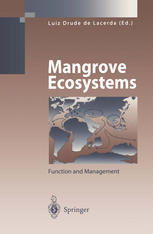

Most ebook files are in PDF format, so you can easily read them using various software such as Foxit Reader or directly on the Google Chrome browser.
Some ebook files are released by publishers in other formats such as .awz, .mobi, .epub, .fb2, etc. You may need to install specific software to read these formats on mobile/PC, such as Calibre.
Please read the tutorial at this link: https://ebookbell.com/faq
We offer FREE conversion to the popular formats you request; however, this may take some time. Therefore, right after payment, please email us, and we will try to provide the service as quickly as possible.
For some exceptional file formats or broken links (if any), please refrain from opening any disputes. Instead, email us first, and we will try to assist within a maximum of 6 hours.
EbookBell Team

4.4
102 reviewsThis book presents the ecology of mangroves mostly from the point of view of people who have everyday experience with these wonderful forests, rather than from those who only make a typical short visit to exotic places. It contains five chapters written by specialists of mangrove forests around the world, and most of the results and information were gathered from international cooperation research programs developed during the last decade. The first three chapters describe the origins, structure, function and management of mangrove forests in tropical America, Africa and Asia. The last two chapters present an overview of mangrove phenology and its state-of-the-art management and conservation policies. The chapters present a regional view of mangroves as a natural resource in use by a large fraction of the coastal populationss in the tropics and subtropics. The text includes extensive data on the biodiversity and physicochemical aspects of these forests, on their biogeography and ecology, and probably for the first time in a textbook on mangroves, manifold information on the uses, management techniques, silviculture and traditional and modern uses of these ecosystem products and services. Also, overviews of the major anthropogenic and natural influences that cause impacts on these ecosystems are presented.